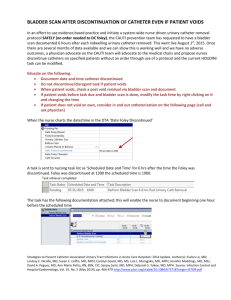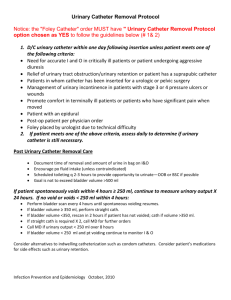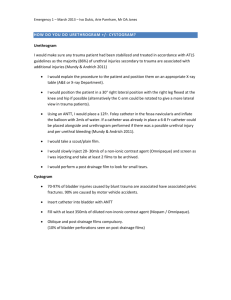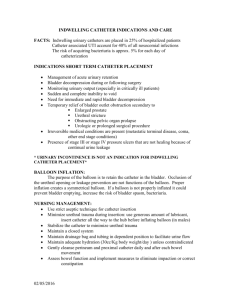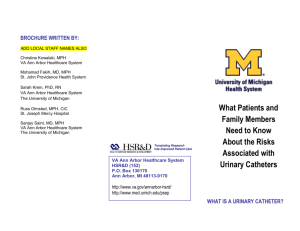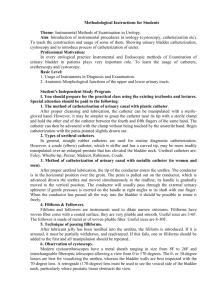Example of a Nurse-Driven Protocol for Catheter Removal
advertisement
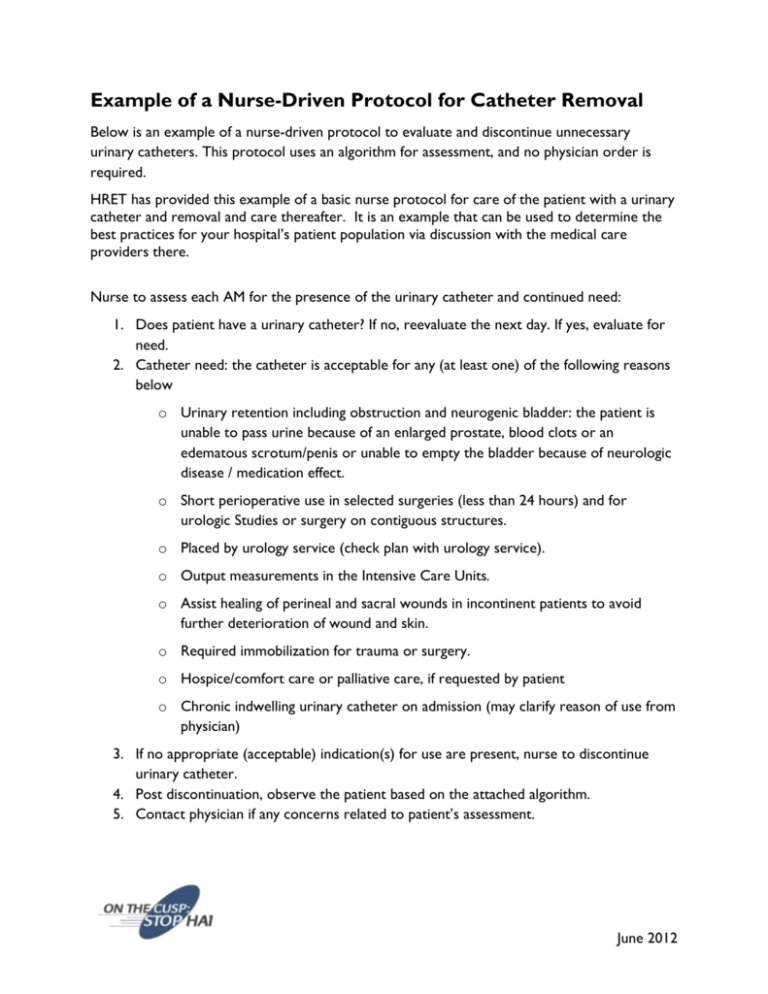
Example of a Nurse-Driven Protocol for Catheter Removal Below is an example of a nurse-driven protocol to evaluate and discontinue unnecessary urinary catheters. This protocol uses an algorithm for assessment, and no physician order is required. HRET has provided this example of a basic nurse protocol for care of the patient with a urinary catheter and removal and care thereafter. It is an example that can be used to determine the best practices for your hospital’s patient population via discussion with the medical care providers there. Nurse to assess each AM for the presence of the urinary catheter and continued need: 1. Does patient have a urinary catheter? If no, reevaluate the next day. If yes, evaluate for need. 2. Catheter need: the catheter is acceptable for any (at least one) of the following reasons below o Urinary retention including obstruction and neurogenic bladder: the patient is unable to pass urine because of an enlarged prostate, blood clots or an edematous scrotum/penis or unable to empty the bladder because of neurologic disease / medication effect. o Short perioperative use in selected surgeries (less than 24 hours) and for urologic Studies or surgery on contiguous structures. o Placed by urology service (check plan with urology service). o Output measurements in the Intensive Care Units. o Assist healing of perineal and sacral wounds in incontinent patients to avoid further deterioration of wound and skin. o Required immobilization for trauma or surgery. o Hospice/comfort care or palliative care, if requested by patient o Chronic indwelling urinary catheter on admission (may clarify reason of use from physician) 3. If no appropriate (acceptable) indication(s) for use are present, nurse to discontinue urinary catheter. 4. Post discontinuation, observe the patient based on the attached algorithm. 5. Contact physician if any concerns related to patient’s assessment. June 2012 Discon nue UC when no longer meets criteria Pa ent voids within 6 hours and no symptoms Observe Pa ent voids within 6 hours but has symptoms of abdominal fullness or discomfort Pa ent unable to void within 6 hours Bladder scan, if volume <300 ml, observe. Repeat postvoid bladder scan if symptoms persist and contact physician Bladder scan, if volume <300 ml, observe. Repeat postvoid bladder scan if symptoms persist and contact physician Bladder scan, if volume >300 ml, intermi ent catheteriza on. Repeat postvoid bladder scan if symptoms persist and contact physician Bladder scan, if volume >300 ml, intermi ent catheteriza on. Repeat postvoid bladder scan if symptoms persist and contact physician June 2012
